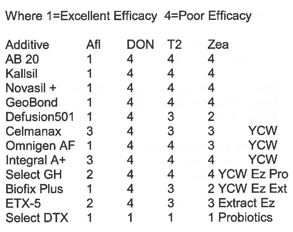Dairy Producers Banquet: December 14 at the Knights of St John Hall 8608 SR 119 Maria Stein (across from the Post Office).
"Reviewing the Present, Focusing on the Future"
Schedule:
9:30 Exhibits Open
10:00 The State of Dairy 2022, The Good and the Not So Good -Dr. Mark Fox Thumb Vet Service
11:00 Gaining a Competitive Edge in Milk Quality
Dr. Pam Ruegg Michigan State University
12:00 Wedding Style Dinner by Everyone Cooks
1:00 Cow Signals, Are Two More Lactations Possible? Dr. Mark Fox
2:00 How We Manage Herds Differently with Activity Monitors Kelsey Deboer and Producers Allflex, SCR
Producer's Banquet Focus
There was a time the dairy business was simpler. We milked, fed, bred, and cared for cows. We obtained feed and removed manure and made a good living in the process. Dairy business is different now. There are many moving parts and the opportunity to make a wrong decision is real. Dr. Mark Fox will cover this. Dr Fox has many years of watching the big picture which gives him a unique perspective on how to get where we need to go.
Milk quality has also become the key to market access in the competitive environment we now live in. Losing your milk market would be the biggest emergency you could have. It happened in multiple states this last year. Dr. Ruegg will discuss how we stay in the business by making the milk that processors want. She has a wealth of experience in the industry to share. When milk is in surplus, the best quality gets purchased at the best prices.
Dr. Fox will discuss "Cow Signals", the Dutch approach to advanced cow comfort. Think how your herd dynamics would change if cows lived just one lactation longer. You've seen the changes with beef on dairy and right sizing your heifer herd. This is bigger than that because those healthy mature cows could really pound out the milk. There should be something to take home here.
Activity monitors are changing the way we manage dairies. Rumenation integrated with milk weights lets fresh cows doing well go back to their pen to drink, eat, and lay down. No need to examine them. Respiratory rates have been used to decide we need sprinklers or more fans.
Reproduction is the entry level for monitors. 20 years ago, we had a Producer's Banquet that changed how we did reproduction on farms. We introduced Ovsynch and the use of ultrasound for early open diagnosis. The two in combination were responsible for reducing days open by as much as a month on many farms. We have refined our synch. G 6 G and Double Ovsynch have become very common as fertility programs. This means that they have higher conception rates than the base program of Ovsynch. They also reduce the number of twin pregnancies. Some herds use 5 day CoSynch, which has the same conception as Ovsynch but has the advantage of a shorter time period and all shots are given at the same time of day. With Ovsynch, the GnRh to breed interval needs to be 8 to 16 hours. It is common that routines fall outside of that. Many farms resynch cows with a dose of GnRH a week before herdcheck. All of those things together have made for successful breeding programs.
Can we have the same or better results with less work using activity monitors? Very commonly, yes because heat detection is 10 to 15% better. Some have abandoned the resynch GnRH in favor of determination by ultrasound at open check if a cow gets prostaglandin for the monitor to detect heat, goes into quick synch, CoSynch, full Ovsynch, or full Ovsynch with a CIDR. Different farms prefer different strategies, and different conditions require different strategies. We are still refining how we use all of the information generated by monitoring systems. An example is now that we know when a cow came into heat versus when we saw her in heat, when should we breed her? These issues will come out in the discussion and the presentations.
Mycotoxins, Yes we have them ! Health, reproduction, and production are all decreased by mycotoxins in the feed. Mycotoxins are created when there is a failure of fermentation and molds create the toxins. Mycotoxins can be on the crop in the field, can be created during fermentation that drops pH too slowly, or they can be created at feed out. Molds are increased with minimum tillage and high population density and are decreased with crop rotation and fungicide application. Some varieties are more susceptible than others.
Many of our corn products this year are contaminated by mycotoxins. Some are in fields next to or even with the same variety that is clean. One nutritionist took samples of corn products including distillers, corn gluten feed, and corn grain and found DON (vomitoxin) in all of them and Zearelanone and T2 in some. That was without the contribution from corn silage. When DON levels get above 3 ppm, we have problems. We have seen levels as high as 16ppm this year. Results in the COWS include, decreased feed intake, indigestion, decreased fertility, embryo loss, and cystic ovaries. Binders can be effective at neutralizing some of the effects of mycotoxins but commonly not all. Different binders are effective against different toxins. Testing your inventory may help you make better decisions as to what forage gets fed to which animals and what binder makes the most sense. We've seen some dramatic improvements moving from contaminated feed to clean feed.
This chart of matching binders to toxins is provided by Agrarian. They make the Select DTX binder.
There is difference in binders. Are two better than one? The right one is probably better than the wrong two. Testing can be a guide, but it can also be elusive. There is variation in the contamination level from day to day.
The deepest sin against the human mind is to believe things without evidence. -Aldous Huxley






